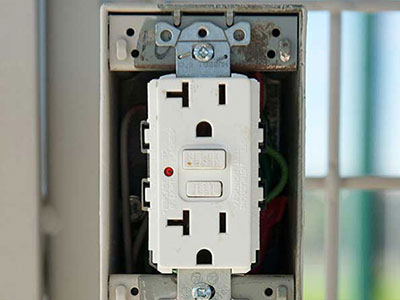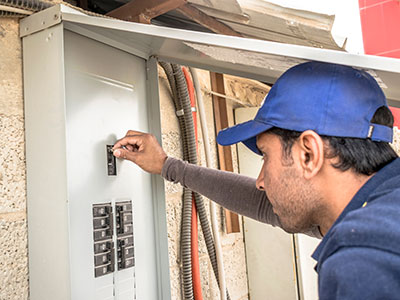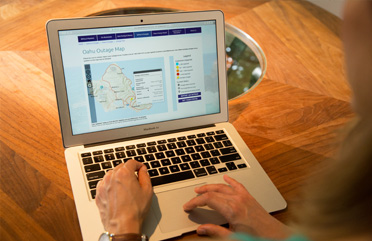View Outage Updates on X (Twitter)
Follow @HwnElectric, @MauiElectric, or @HIElectricLight for regional information, or click below to view our recent outage notifications on X (Twitter).
Safety & Outages
Safety is Hawaiian Electric’s top priority. As a storm approaches, we urge our customers to consider these emergency preparedness steps:
General
- Know the Hawaii Emergency Management Agency (HiEMA, formerly known as State Civil Defense) warning signals
- Place important documents, such as insurance papers, in waterproof bags or containers
- Keep cash or travelers checks on hand
- Fill up the gas tank of your car
- Always have a home survival kit ready
Inside the Home

- Check emergency equipment, such as flashlights, emergency generators, battery-operated (hand-crank or solar) radios, light sticks, and lanterns to be sure they are operational, and buy extra batteries
- Unplug electric appliances you may not need or use
- Stock up on non-perishable foods, medications, personal hygiene, sanitary and baby supplies to last seven days.
- Purchase bottled water or store enough to supply one gallon per person per day, for seven days
- Keep a first aid kit and special medications
- Pack a manual can opener and bottle opener
- Turn your refrigerator/freezer to the coldest setting; in the event of a power outage, food will keep fresh longer.
- Stock an ice chest with ice or frozen ice packs
- Store matches or a lighter in a waterproof container
- Keep a whistle to signal for help
- If you own a pet, have extra pet food and water
Outside the Home

- Tie down or store all loose objects
- Bring potted plants into the house
- Remove and store lanai furniture
- Throw deck furniture into the pool
- Cover all windows and door openings with boards, shutters, or other shielding materials
- Wedge a dowel or a piece of broom handle into the track of sliding glass doors to secure them
- If you plan to use a portable generator after the storm, make sure it is placed in a well-ventilated area (outside the home), and be sure to carefully follow all instructions in the manufacturer’s manual
- If you plan to use a ladder while preparing your home for the storm, note the location of power lines before you begin. Be sure that ladders or scaffolds are far enough away so that you – and the ends of the tools you’re using – stay at least 10 feet away from power lines. Before lowering a TV antennae or satellite dish, make sure to turn off and unplug the TV
- Most counties will suspend trash and debris pickup before a storm. Please do not trim trees now, as high winds can turn cut branches into dangerous, flying debris. However, if you have already trimmed trees, please help to prevent outages by tying down or securing any of those loose branches or other debris
- For cooking, purchase butane, propane, or a canned heat stove and enough fuel for seven days, or a charcoal grill and charcoal. Do not use these units indoors
- Properly secure propane tanks in a cool, dry, and well-ventilated storage area
- If you have photovoltaic panels installed on your roof, consult your licensed solar contractor regarding normal and emergency operation procedures for your system
Special Considerations for Medical Patients
Pre-storm/evacuation
- Home health care patients should discuss emergency plans with their physician or agency representative beforehand and make appropriate arrangements.
- If necessary, make prior arrangements with a hospital or emergency facility to stay there if you must evacuate. Storm shelters generally only provide first aid, not nursing care or medical assistance. If you must go to a hospital or emergency facility, be sure to take your medicines and medical equipment and supplies with you. If the situation is life threatening, call 911.
Post-storm/evacuation
- Individuals who are dependent on electrically powered life support medical equipment and do not have a backup power supply should make arrangements to go to an appropriate location with power. They should take their medical equipment and medications with them. They should also contact their medical equipment supplier for any special equipment needs.








